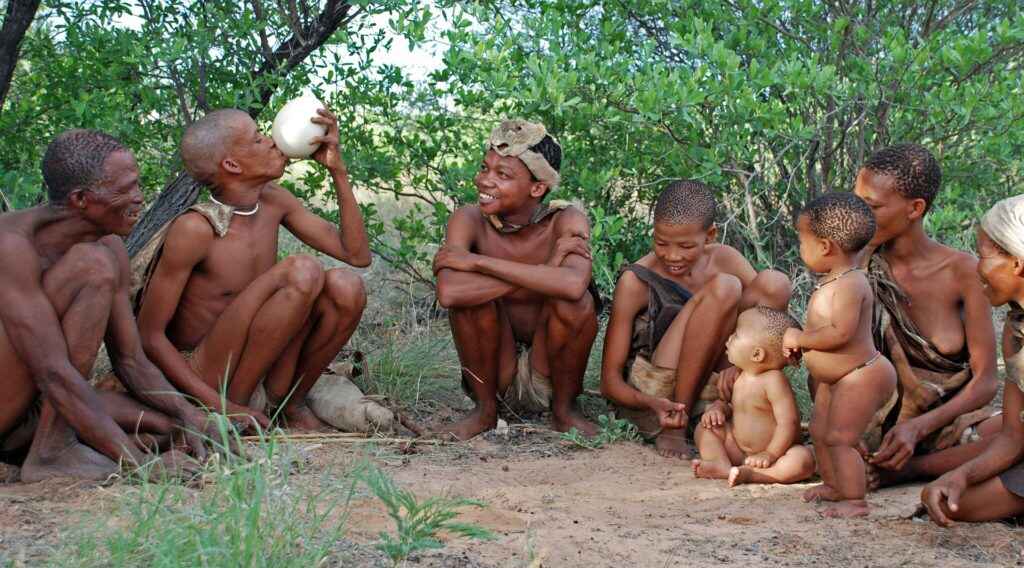The San People: Africa's Indigenous Custodians
The San People, also known as the Bushmen or Basarwa, stand as a living testament to the indomitable human spirit and the resilience of indigenous cultures. Nestled in the vast landscapes of southern Africa, the San People have inhabited the region for thousands of years, offering a unique window into the continent's rich history. In this comprehensive exploration, we delve into the multifaceted world of the San People, from their ancestral roots to their present-day challenges, celebrating their cultural heritage and shedding light on the crucial role they play in preserving biodiversity.
Embrace the beauty of cultural diversity and enrich your understanding of the world! Learning about different cultures is an enriching journey that broadens our perspectives, fosters empathy, and fosters respect for one another. It allows us to appreciate the unique traditions, values, and customs that shape the identity of various communities around the globe. Learn about the Hamer Tribe, the Hadza Tribe, the Sami, the Akha People, the Aymaraes, the Kazakh People and the Adivasi on AmplifyGlobe.

Ancestral Roots: Tracing the Origins of the San People
To truly understand the San People, one must embark on a journey through time, tracing their ancestral roots. Genetic evidence suggests that the San People are one of the oldest human populations, with a lineage that can be traced back tens of thousands of years. Their ancestors left an indelible mark on the rock faces of southern Africa, painting vibrant scenes that serve as a testament to their rich cultural and spiritual practices.
Lifestyle and Traditions: A Harmonious Coexistence with Nature
Central to the identity of the San People is their unique lifestyle and close connection with the natural world. Traditionally, they are hunter-gatherers, relying on a deep understanding of the environment to sustain their communities. The use of traditional hunting techniques, such as poison-tipped arrows and traps, showcases a profound respect for the delicate balance between humanity and nature.
Intricately woven into their daily lives are rituals and ceremonies that honor the spirits of the land. Transitioning seamlessly from one season to the next, the San People's cultural practices mirror their adaptability and resilience, fostering a harmonious coexistence with the environment that has sustained them for millennia.
Language: The Sonic Tapestry of the San People
At the heart of any culture lies its language, and the San People are no exception. The complex array of click consonants in the San languages has fascinated linguists and anthropologists alike. These unique linguistic features not only reflect the intricate nuances of their communication but also serve as a sonic tapestry, weaving together the threads of their cultural identity.
The language of the San People, often referred to as the "click languages," is a fascinating linguistic tapestry that reflects the rich cultural heritage and unique identity of these indigenous communities. While various San groups have distinct languages, they share a common feature: the incorporation of click sounds into their speech.
Phonetics of Click Languages
Click Consonants: A Sonic Signature: The hallmark of San languages is the use of click consonants, which are sounds produced by creating suction in the mouth. These clicks, denoted by symbols such as !, //, and /ǀ/, contribute to a distinctive sonic landscape. Linguists classify these clicks into different types, each with its own articulation and linguistic significance.
Three Primary Types of Clicks: Dental Clicks (/ǀ/): Produced by placing the tip of the tongue against the upper front teeth, dental clicks are prevalent in San languages. They add a unique rhythmic quality to speech. Alveolar Clicks (!): Created by striking the tip of the tongue against the alveolar ridge (the area just behind the upper front teeth), alveolar clicks are another integral component of San languages. Lateral Clicks (/ǁ/): These clicks involve the tongue striking the side of the mouth, creating a distinctive lateral sound. Lateral clicks contribute to the phonetic diversity of San languages.
Challenges in the Modern Era: Navigating a Changing Landscape
While the San People's cultural heritage is a source of pride, the modern era has ushered in a wave of challenges. Encroachment on their ancestral lands, forced relocations, and the impact of external economic activities have posed existential threats to their traditional way of life. As the world evolves, the San People find themselves at a crossroads, navigating the delicate balance between cultural preservation and adaptation to a changing landscape.
Biodiversity Stewards: The San People's Role in Conservation
Beyond their cultural significance, the San People play a vital role in the conservation of biodiversity. Their deep knowledge of the natural world, passed down through generations, has proven invaluable in preserving delicate ecosystems. As custodians of the land, they have a unique understanding of sustainable practices, contributing to the global effort to protect the planet's biodiversity.
Contemporary Initiatives: Empowering the San People
Recognizing the challenges faced by the San People, various organizations and initiatives have emerged to empower and support these communities. From advocating for land rights to promoting sustainable tourism that respects their cultural practices, these efforts strive to create a more equitable future for the San People.
Summary
In conclusion, the San People stand as a living testament to the resilience and adaptability of indigenous cultures. From their ancestral roots to the challenges of the modern era, the San People have weathered the storms of time, leaving an indelible mark on the cultural and environmental tapestry of southern Africa. As we celebrate their rich heritage, it is imperative that we also acknowledge the challenges they face and work collectively to ensure the preservation of their unique way of life. In doing so, we contribute not only to the well-being of the San People but also to the global tapestry of human diversity and the conservation of our planet's precious biodiversity.